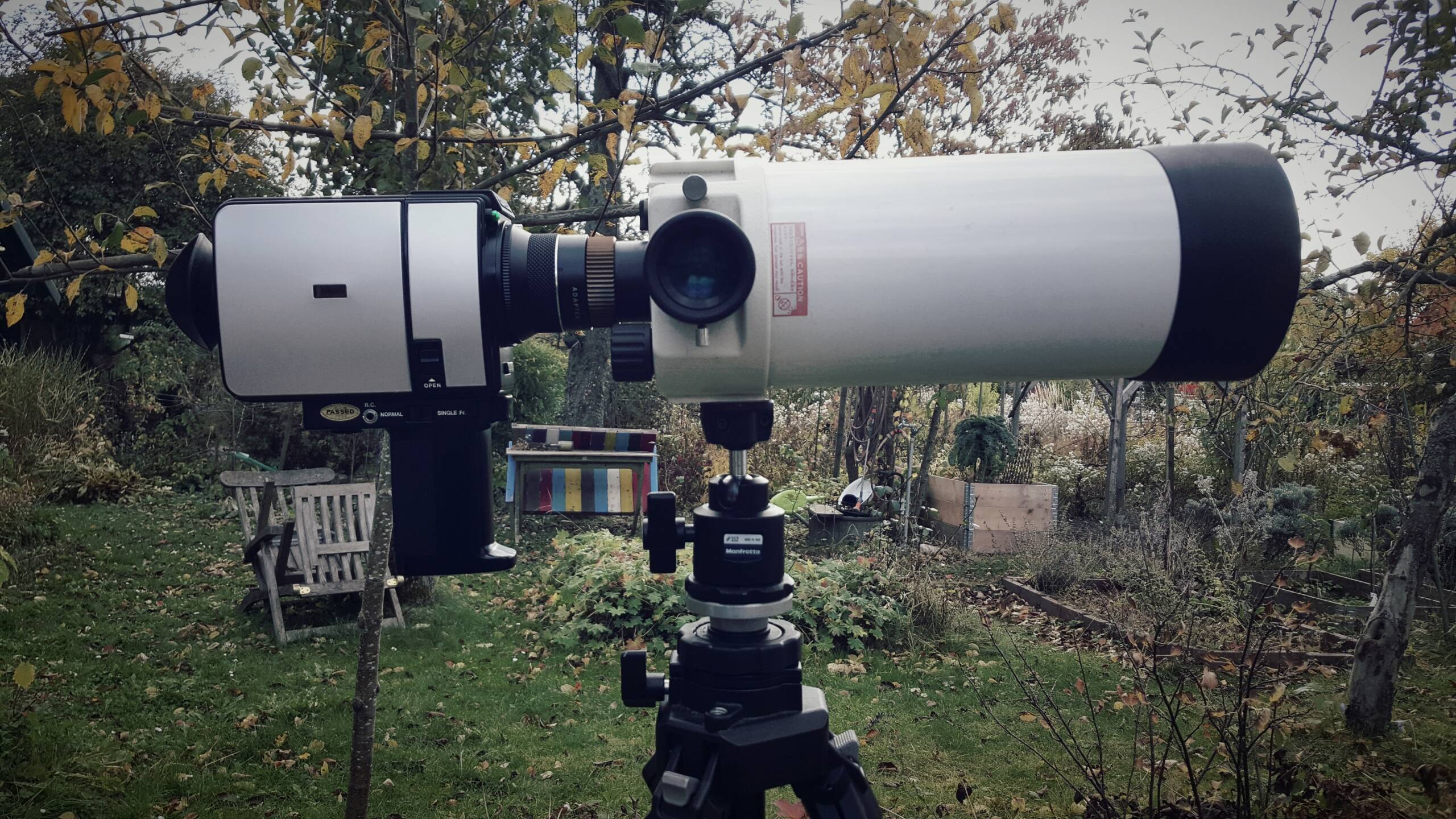
I recently got a newCarena Zoomex 7610 IM with accessories. Like the better knownNalcom, this camera was made by Shinsei Optical in Japan. Both camera models have an interchangeable lens function.
The Carena came with a zoom lens with a 6.5-65mm focal length and a 22mm fixed focal length macro (close-up from 23cm). There was also an adapter for connecting photo lenses with M42 mount.

Unlike the “real” interchangeable C-mount of a Beaulieu or Fujcia ZC1000, the camera has a base optic built into it.



The M42 adapter now offers the possibility of working with very extreme telephoto focal lengths for the narrow film format.
My first tests were done with the following lenses:
Connection of a 1000mm mirror telescope from the astronomical field

The reflector telescope had a T2 mount, which is also 42mm in diameter, but differs slightly from the M42 adapter in terms of the thread pitch.

The combination of telescope and film camera was therefore barely usable and the way too unstable tripod construction made it almost impossible to focus the mirror telescope (which naturally has practically no depth of field). With this “experimental set-up” I hence didn’t shoot any film. A correspondingly stable rig or similar supporting structure is essential for this.
Using a 135mm telephoto lens (35mm photo lens)

In contrast to the first test arrangement, this camera-lens combination is much more manageable. It is also possible to take pictures with a normal tripod without any additional stiffening measures.

One disadvantage of the camera must be mentioned in this context: the tripod can only be attached to the base of the permanently mounted handgrip, which considerably reduces the stability on the tripod.
Finally, two more viewfinder insights to give an impression of the resulting tele-optics:


I’m really excited to see how the test shots turned out, especially in terms of sharpness and steadiness!










Related Posts